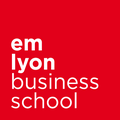Part of the economic thinking on research and development (R&D) aims to identify the factors on which companies base their choices for the organization of innovation activities, and to understand their impacts on various dimensions. These include the amount of investments made, the profits they generate for the industry, as well as a measurement of consumer or user satisfaction. The results of this thinking can namely help to shed light on the action of competition authorities and other regulatory bodies that promote the emergence of more favorable practices for society.
The case of the pharmaceutical industry
The stakes of organizing research and development operations are particularly high in the pharmaceutical industry. For technological reasons, the discovery of new medicines or vaccines comes with a great risk of failure and requires a heavy financial commitment for long periods of time. The drop in productivity of R&D investments, observed over the past several decades, has encouraged companies in this sector to explore new approaches.
For example, a growing share of the expenditure required to develop new products is subcontracted out by the major pharmaceutical groups to specialized companies that have complementary scientific expertise. One historic example of this is the launch of the first synthetic human insulin thanks to a partnership between pharmaceutical company Eli Lilly and one of the very first startups in the genetic engineering sphere, Genentech.
In other circumstances, competing companies choose to cooperate on research and development. One recent example is the announcement by AstraZeneca and Sanofi that they will share over 200,000 compounds from their respective compound libraries in order to speed up the discovery of new medicines. In general, such cooperation helps to avoid duplicating budgets and to pool knowledge. Applied microeconomic models have also shown that inter-firm cooperation in R&D, as opposed to competition, can result in more investment.
Cooperation between companies can also relate to the diffusion of intellectual property rights. In the case of a set of technologies all required to engineer a new process or product, a set of patents, each held by a different company can be sold together in the form of a ‘patent pool’. By setting up a one-stop shop where a single license for all of the technologies in the ‘pool’ can be obtained, this type of arrangement reduces the risks of legal disputes and lowers transaction costs. As well, economic analysis shows that this process can remedy the problem of multiple margins by coordinating a decrease in license fees, in the interest of all parties, consumers and patients in particular. There have been several agreements of this type, which pharmaceutical companies and public research organizations in the life sciences contribute to. The Medicines Patent Pool (MPP), founded in 2009 by UNITAID, brings together intellectual property for treatments against HIV, hepatitis C and tuberculosis. The Pool for Open Innovation Against Neglected Tropical Diseases (POINT), initiated the same year by GlaxoSmithKline, in 2011 became a stakeholder of WIPO Re:Search, created by the World Intellectual Property Organization (a United Nations agency), which focuses on diagnosing, preventing and treating communicable diseases that impact the world’s poorest regions.
R&D incentives, rare diseases and low-income populations
Financing a costly, risky R&D program poses a problem when, in the best-case scenario where a new product is indeed developed, the anticipated revenue is particularly limited and/or uncertain. This is the kind of funding constraint that companies must face when investing to find means to treat or prevent diseases that are rare or affect populations located in low-income areas.
Various mechanisms have been designed to increase the incentives to invest in this type of situation. For example, for rare diseases, European and American regulatory agencies, which grant marketing approval for medicines, have implemented special procedures and extended exclusivity periods for companies that bring new solutions. In the case of vaccines, governments and philanthropic institutions help to fund immunization programs in countries with low per capita income.
Economic analysis is particularly well suited to thinking about the relevancy of such programs and about the development of new approaches. It helps to build a comparison of various incentive scenarios in order to identify those that best increase the chances of obtaining good results.
Ebola, Zika, …
We are painfully reminded of the importance of investments in research and development, and the incentives that orient them for the development of diagnostic tools, new vaccines and new therapies, in the crisis situations sparked by the emergence or sudden spread of virulent pathogens such as SARS in 2003, H5N1 in 2005, H1N1 in 2009, Ebola a couple of years ago, and Zika today.
These global scale emergency situations can result in the setup of incentive programs and new collaboration that involves industrial firms, scientific organizations, regulatory agencies and public or private funding providers to speed up the development and distribution of solutions.
In particular, the Ebola crisis led the World Health Organization (WHO) to design a blueprint that aims to guide the research and development efforts of public and private players in the event of new health emergencies triggered by new epidemics. An emergency assessment procedure has been set up in order to enable use of experimental products more quickly than in the standard regulatory framework. This approach is already being used in the fight against the Zika virus, notably for the development of diagnostic products and for reliable detection of the virus and of the complications it can possibly cause (congenital birth defects and neurological disorders). Also, the biggest companies in the sector, including Sanofi Pasteur in Lyon, very quickly joined the “race” to develop a vaccine.
Yet the technological hurdles, together with the clinical phases required to assess efficacy and safety of candidate products, can require considerable investment over several years. Will manufacturers, regulatory bodies and funding providers perhaps consider new approaches to speed up the research and development process?

I am a professor and researcher in industrial economics at emlyon business school, as well as a member of the GATE research unit (CNRS, unit #5824). My work mainly focuses on companies’ investment decisions on innovation, and the way they choose to organize their R&D (sub-contracting, cooperation, competition, etc.) in relation to the regulatory environment.
More information on Bruno Versaevel:
• His CV online
• His ResearchGate page


Recent Comments